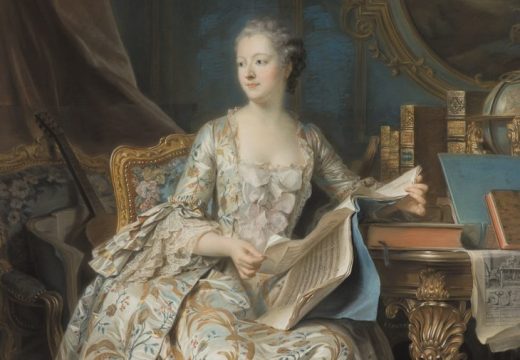35 | Chief Curator, The Hepworth Wakefield, Wakefield, UK
You studied history of art at the Courtauld. Did you know back then that you wanted to be a curator?
Towards the end of my studies at the Courtauld I knew that I wanted to work with living artists and I actively started doing studio visits and making small exhibitions, including a show at the bottom of a back staircase in Somerset House with the artist Goshka Macuga. I’ve always been interested in how we physically experience works of art and objects and so I knew early on that I wanted to explore ideas through exhibitions, as well as through research and writing.
You joined the Hepworth Wakefield as chief curator in 2013, two years after it opened. Does the relative youth of the institution make for particular opportunities and challenges?
It being a new institution was one of the things that attracted me to the role. We are still in the process of defining for ourselves what it means to be a new museum in the 21st century, particularly one outside a capital city, and so it is an evolving challenge. We certainly have to fight harder for audiences and for funding, but it keeps you nimble and ambitious. The Art Fund Museum of the Year win last year was a gratifying recognition of our successes, particularly as it was awarded on the strength of our programme.
How has the programme developed under your aegis?
Modern British art will always be a central part of the story we tell at the Hepworth, and it’s a passion of mine, but a big part of what I wanted to do with the programme was to bring to it a greater international dimension, focusing especially on under-recognised artists such as Alina Szapocznikow or Lynda Benglis – figures who have a particular hold on a younger generation of contemporary artists. While our collections and exhibitions are primarily rooted in the visual arts, several recent projects I’ve worked on have explored new conversations between art, architecture, design, craft and fashion, encouraging our audiences to question the increasingly porous boundaries between these creative fields, and how they might coexist in a museum like the Hepworth Wakefield.
Prior to joining the Hepworth Wakefield, you worked a lot with emerging artists. How has the modern art collection in Wakefield informed your curatorial approach?
As a curator with a training in art history, I always see the present as being in dialogue with the past. Being able to take these conversations out of the realm of reference and into a physical dialogue in the gallery space has been an exciting shift in the way I think and work, as it is for many of the younger or mid-career artists I’ve worked with, such as Enrico David or Magali Reus, who found unexpected resonances between their work and those in the collection. I’m incredibly lucky that my role enables me to make both researched historical shows and to commission new works by living artists.
As a curator, do you ever feel like an artist manqué?
Not at all. I see the role of the curator as being just as creative and inventive as that of the artist. With each show you’re telling a new story in a completely different way, visually, conceptually and interpretatively. With contemporary artists I often work very closely, even collaboratively, to realise a project, which makes the day-to-day role challenging but enormously rewarding.
Have you been able to do things in Wakefield that wouldn’t have been possible at a gallery in London, and vice versa?
We are facing the same pressures that everyone in the public sector is facing at the moment. Yet rather than play it safe, we’ve made a commitment to remaining bold and challenging in our programming. Happily our visitor figures are increasing year on year. This commitment has enabled me to work on ambitious large-scale retrospectives of lesser-known artists, and experimental curatorial projects that are risky, but have proven popular. Yes, at a larger London museum there would be greater resources to work with, but I’ve come to realise that limited budgets often make for more focused and tightly curated exhibitions that can be all the better for it.
This year, you’ve been working as a curatorial advisor to Frieze art fairs. Could there be more productive collaboration between institutions and the commercial art world?
Ultimately we are all supporting artists and creating opportunities for art to be made and seen. We should be alert to the potential conflicts but the institutional and commercial worlds are inextricably linked and as public funding becomes increasingly scarce, we’re going to need to find ways of working together more closely.
What advice would you give to someone looking to start out as a curator?
Even if you want to work with contemporary artists, having a knowledge of art history, however broad, is indispensable. And then it’s the usual advice: see as many exhibitions as you can, even those outside your field of interest, and gain experience in different kinds of organisations in order to home in on what type of curator you actually want to be. And make shows, however small. I’ve been to many a great exhibition in someone’s front room!
See more 40 Under 40 Europe Thinkers
Unlimited access from just $16 every 3 months
Subscribe to get unlimited and exclusive access to the top art stories, interviews and exhibition reviews.








